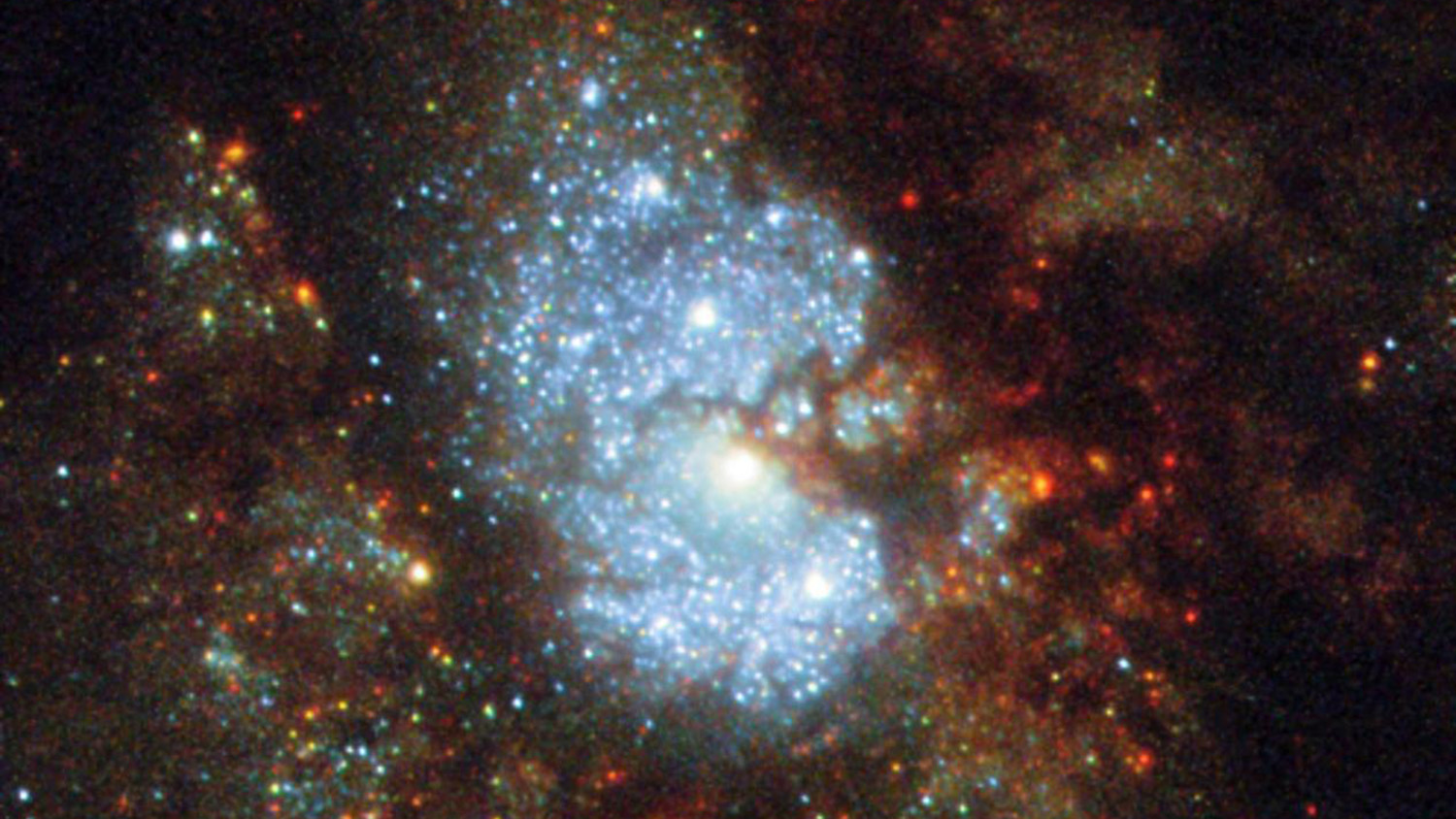Where Do New Galaxies Come From?

Studying the universe isn’t easy, and not just because of the massive distances involved. If you want to study the galactic nurseries where stars and galaxies form, you often have to look at areas of the universe where there isn’t any visible light, due to the aforementioned absence of stars.
Astrophysicists compensate for this by using spectroscopy, which enables them to “see” not only wavelengths of light that aren’t visible to the naked eye, but also to detect energy ranging from radio waves to gamma waves. In this way, they can analyze the contents of very distant cosmic phenomena.
In a recent Nature study, NC State astrophysicist Rongmon Bordoloi was part of a team that detected “primordial gasses” located far from any galaxies. By detecting and studying the composition of these gasses, the team hopes to further unravel the mystery of how galaxies are born, and what they’re made of at the most basic level.
Bordoloi sat down with The Abstract to answer some questions about the latest study.
The Abstract: In your paper, you saw “primordial gasses” coming out of newly forming galaxies. What were these primordial gasses? How many were there and how did you identify them?
Bordoloi: We discovered two clumps of primordial gas hundreds of thousands of light years away from nearby galaxies. These “clumps” are neutral atomic gas clouds which are rather compact in size relative to a galaxy; they’re a factor of 10 or so smaller than a regular galaxy.
We identified them using the ALMA Radio Telescope array (Atacama Large Millimeter Array), a large radio telescope array situated in the Atacama Desert in Chile. We detected a forbidden transition of a singly ionized carbon atom, which creates a specific spectral signature. That signature implies that the signal is coming from an extremely high density gas cloud.
That spectral signature combined with a lack of “visible” stars when we viewed the same area with the Hubble Space Telescope, meant that a primordial gas cloud/galaxy was present in that area.
TA: How do these gasses form?
Bordoloi: That is a good question. How these clouds form is still a mystery. These clouds are detected – as I explained above – by finding forbidden carbon emission in infra-red light. But they don’t emit any optical or UV light (that we can detect), which suggests that there are no stars in these clouds.
One hypothesis is that these dense clouds are forming as gas cools out of the intergalactic medium (the large cosmic web, where most of the baryons in the early universe reside). Or alternatively, they may have formed out of dense gas clouds excited by strong radiation coming from galaxies.
TA: Do these primordial gas clouds play a role in the formation of new galaxies? If so, how?
Bordoloi: Yes they would play a role in galaxy formation. Gravitational pull means that these clouds will eventually fall into galaxies and form stars, thereby increasing the mass of the galaxies. Indeed this is one of the primary channels (gas falling onto galaxies), via which galaxies grow from being relatively small galaxies in the early universe to becoming a massive galaxy like the Milky Way is today.
TA: What does this discovery tell us about the early universe?
Bordoloi: These primordial gas clouds exist near several other galaxies, and the space in between them is filled with hot (100,000 degrees Kelvin) plasma that we also detected. This discovery suggests that there is a lot of chemical mixing of gas in the early universe. For example, supernovae exploding in early galaxies could eject a lot of ionized plasma out of those galaxies, which would then eventually fall back into the galaxies and form the next generation of stars. So the early universe is a really dynamic environment – kind of a cosmic recycling machine of enriched gas, and this “machine” eventually creates the complex atoms and molecules that are abundant today in our own solar system.
TA: What did you think was the coolest part of this discovery?
Bordoloi: The discovery of these pristine dense gas clouds was totally unexpected, and led us to think really hard about how such primordial gas clouds can exist in the first place. Note that this project is only possible because we could combine observations from space (Hubble Space Telescope imaging), ground based spectroscopy and ground based deep sub-millimeter observations (with ALMA).
Being able to do such a multi-wavelength search is one of the unique aspects of this project that yielded really unexpected and exciting science. To me that synergy of combining all the resources and wavelength ranges together to perform a coherent science experiment is indeed an amazing aspect of this work.
- Categories:


